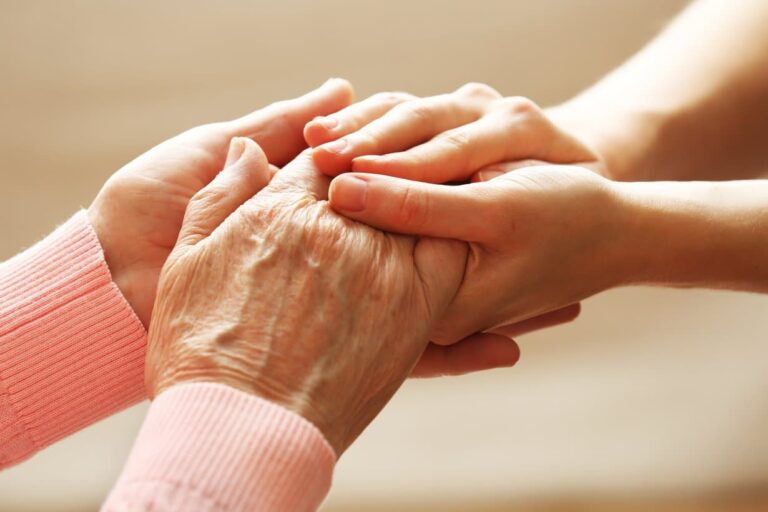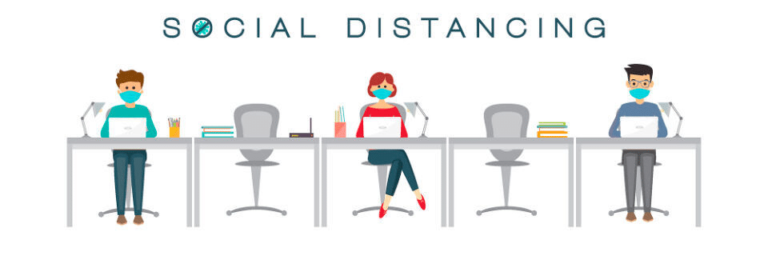I ran up the stairs with about five minutes to go before show-time.
Door opened, I stepped into my studio. Curtains closed to shut out the unpredictable natural light, I switched on the two lamps set to frame either side of my face. I turned toward the camera and smiled. Not a memory from my CNN reporting days, this is a scene many of you are now familiar with. It’s time for another working from home “live-shot.”
Over the past eight weeks or so, (I’ve lost count), my bedroom has transformed into a broadcast center. Yes, there’s still a bed, but it’s positioned out of web-camera range. What is in the “shot” behind me as I stand, not sit, in front of the screen facing “my audience,” is my wooden dresser. But now the jumble of assorted framed family photos once scattered on top of it, has been removed. Instead, there’s a crystal vase full of flowers which I refresh every week. On the wall above the dresser, where the vase now rests, there used to hang a large round mirror. That’s been replaced by a large round, orange foamboard logo of my company, the Language of Leadership. You see, as much as I could manage during this ongoing time of working from home, I’ve gone professional. I’ve got staging. I’ve got branding.
But don’t let my sentimental harkening back to my days as an intrepid TV correspondent, fool you. I don’t have a producer helping me get organised. There’s no director in a gallery or control room counting down time in my earpiece. There’s no live-shot tech-engineer ensuring the link to “the bird” (aka the satellite) is connected. While we’ve all become broadcasters now in the time of Zoom, Google Meet, WebX and Whathaveyou, we are largely doing this on our own. From our homes.
For all those reasons and more, I freely confess, I get distracted. When standing in my “studio,” for instance, I glance down and notice the carpet could use vacuuming. Between my live-shots, I know I should do important follow-up work. Client reports and proposals should be written. Presentation decks should be created or revised. Invoices should be reviewed. The list is always endless. But instead of attending to the list, I impulsively decide to grab that vacuum or shove a load of laundry in the wash. Or maybe I go check in on my preteen daughter who’s been ensconced in her own bedroom studio entirely too long making a seemingly endless stream of TikTok videos.
I end up putting off paperwork until late in the evening or setting the alarm and working extremely early in the morning. My workday seems meandering and disjointed. I need professional help!
Enter Niamh Brady, mother of one-year-old Emily, recovering workaholic and productivity coach.
“Covid 19 has given workaholics the perfect place to hide and people who aren’t motivated an excuse to not do anything,” Niamh tells me. “Productivity paralysis can set in. Either you’re overwhelmed with too much to do and not enough time or you’re underwhelmed with not enough to do and plenty of options. I help people have better workdays,” Niamh tells me.
“Yes, please,” I implore. “So, what do we need to do?”
1) Understand your number one priority
“Really knowing what your job is, is what it comes down to,” Niamh says. “The first thing in time management is to know who you are and what you have to do. Whether you manage time broadly or in 15-minute increments, I create a weekly outcome matrix. Put three outcomes at the top and the three things you need to do to get that result. This helps focus.”
2) Understand how much time you really spend on work
“Research shows we only spend about three hours a day in ‘deep work.’ The rest is meetings and checking e-mail. You can accomplish a lot in three hours,” advises Niamh. “Don’t hide in your laptop until you burn yourself out. Do work for three hours. But set your timer for 25 minutes, then go make a cup of coffee. We’re not robots, give your brain time to relax and have fun. Check your Facebook. Then go back for another 25 minutes. If you know what your job is and you have your three hours, you can still get your job done and put in your wash.”
3) Arrive at and depart from your “office”
For those of us still working from home, Niamh recommends the power of ritual to better define your workday. “Come into your office in the morning,” Niamh says, meaning literally go outside and enter through your front door. “At the end of the day, do something similar. Leave your ‘office’ and come back into your ‘home.’ Put a pillowcase over your computer so you don’t see ‘work’. You have to or work can seep in.”
Separating home from work these days is a challenge. But necessary. Maybe I’ll move my bed from my “studio” to the garage.
Write to Gina in care of SundayBusiness@independent.ie
With corporate clients in five continents, Gina London is a premier communications strategy, structure and delivery expert. She is also a media analyst, author, speaker and former CNN anchor. @TheGinaLondon




